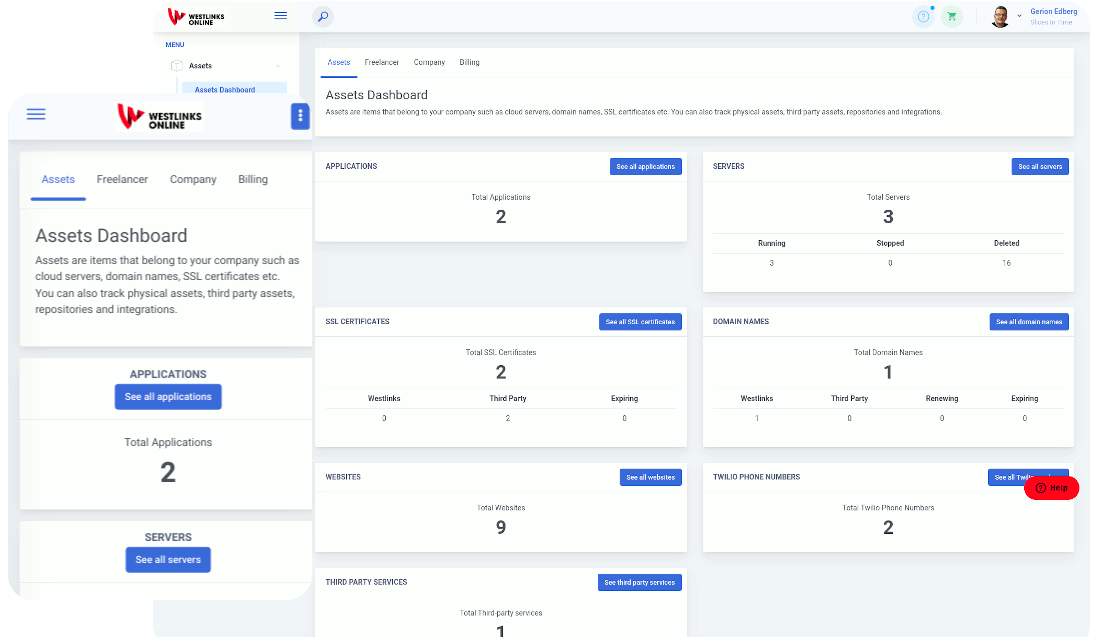
Laravel is a free, open-source PHP web framework intended for the development of web applications following the model - view - controller (MVC) architectural pattern.
We install the latest stable version of Laravel on your VPS instance. You can start developing today!.
Price includes
Domain name recommended. (more info)
Hosting fees separate. (more info)
Installation Price: $10.00 (One Time)
Laravel is what this website (www.westlinks.com) is built on. It is a highly refined PHP framework allowing a huge amount of flexibility for custom web development.
In this package, we will build a Laravel equipped server for you. It will be ready to start developing when it is delivered to you.
From Wikipedia
Laravel is a free, open-source PHP web framework, created by Taylor Otwell and intended for the development of web applications following the model–view–controller (MVC) architectural pattern. Some of the features of Laravel are a modular packaging system with a dedicated dependency manager, different ways for accessing relational databases, utilities that aid in application deployment and maintenance, and its orientation toward syntactic sugar.
As of March 2015, Laravel is regarded as one of the most popular PHP frameworks, together with Symfony2, Nette, CodeIgniter, Yii2 and other frameworks.
The source code of Laravel is hosted on GitHub and licensed under the terms of MIT License.
Taylor Otwell created Laravel as an attempt to provide a more advanced alternative to the CodeIgniter framework, which did not provide certain features such as built-in support for user authentication and authorization. Laravel's first beta release was made available on June 9, 2011, followed by the Laravel 1 release later in the same month. Laravel 1 includes built-in support for authentication, localisation, models, views, sessions, routing and other mechanisms, but lacks support for controllers that prevents it from being a true MVC framework.
Laravel 2 was released in September 2011, bringing various improvements from the author and community. Major new features include the support for controllers, which made Laravel 2 a fully MVC-compliant framework, built-in support for the inversion of control (IoC) principle, and a templating system called Blade. As a downside, support for third-party packages was removed in Laravel 2.
Laravel 3 was released in February 2012 with a set of new features including the command-line interface (CLI) named Artisan, built-in support for more database management systems, database migrations as a form of version control for database layouts, support for handling events, and a packaging system called Bundles. An increase of the Laravel's userbase and popularity lined up with the release of Laravel 3.
Laravel 4, codenamed Illuminate, was released in May 2013. It was made as a complete rewrite of the Laravel framework, migrating its layout into a set of separate packages distributed through Composer, which serves as an application-level package manager. Such a layout improved the extendibility of Laravel 4, which was paired with its official regular release schedule spanning six months between minor point releases. Other new features in the Laravel 4 release include database seeding for the initial population of databases, support for message queues, built-in support for sending different types of email, and support for delayed deletion of database records called soft deletion.
Laravel 5.1, released in June 2015, is the first release of Laravel to receive long-term support (LTS), with planned availability of bug fixes for two years and security patches for three years. LTS releases of Laravel are planned to be released every two years.
Laravel 5 was released in February 2015 as a result of internal changes that ended up in renumbering the then-future Laravel 4.3 release. New features in the Laravel 5 release include support for scheduling periodically executed tasks through a package called Scheduler, an abstraction layer called Flysystem that allows remote storage to be used in the same way as local file systems, improved handling of package assets through Elixir, and simplified externally handled authentication through the optional Socialite package. Laravel 5 also introduced a new internal directory tree structure for developed applications.
The following features serve as Laravel's key design points (where not specifically noted, descriptions refer to the features of Laravel 3)
Ready-to-use bundles provided by Laravel through Composer and Packagist include the following:
Laravel's command-line interface (CLI), called Artisan, was initially introduced in Laravel 3 with a limited set of capabilities. Laravel's later migration to a Composer-based architecture allowed Artisan to incorporate different components from the Symfony framework, resulting in the availability of additional Artisan features in Laravel 4.
The features of Artisan are mapped to different subcommands of the artisan command-line utility, providing functionality that aids in managing and building Laravel-based applications. Common uses of Artisan include managing database migrations and seeding, publishing package assets, and generating boilerplate code for new controllers and migrations; the latter frees the developer from creating proper code skeletons. The functionality and capabilities of Artisan can also be expanded by implementing new custom commands, which, for example, may be used to automate application-specific recurring tasks.
Our support form has been removed from the homepage due to abuse from out of control spambots.
But rest assured that logged in members have full access to our helpdesk. Westlinks is devoted to providing awesome support that you can count on
Please log in to submit a support ticket. Thanks.
